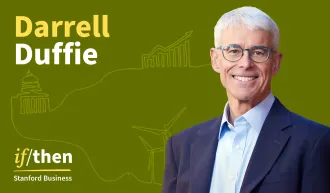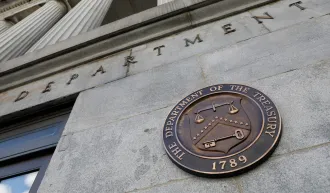Desegregating Advanced Placement Courses
Social Innovation fellow recruits potential achievers who are often overlooked.
January 31, 2011
A pair of 16-year-old best friends is enrolling in classes at Interlake High School in Bellevue, Washington in the late 1990s. With strong backing from his mother, one teen decides to sign up for Advanced Placement courses with their rigorous workloads and the potential to earn college credits. The other boy, whose mother dropped out of high school and was unaware of the benefits of these classes, chooses differently. The first boy excels despite tough homework and long hours of studying. He graduates at the top of his class in 2000 and attends Harvard, where he studies education and government. After Harvard, he teaches in North Carolina, attends graduate school for a dual degree in education and business at Stanford, and receives a fellowship for his own nonprofit from the business school’s Center for Social Innovation. As he shuffles between MBA classes and faces judging panels for funding, his friend works his way through college by patching roofs.

“He’s told me himself that he spent the last 10 years making up for what was lost” with what seemed like an innocuous decision at the time, Reid Saaris, MBA ’10, says of his friend.
Advanced classes throughout U.S. high schools are dominated by upper-middle-class students who’ve been nudged by their parents to enroll. These Advanced Placement and International Baccalaureate courses offer college-level materials and instruction to high schoolers and the opportunity to enter a university with college credits or advanced standing as a sophomore if they pass their exams. However, many students from low-income families are absent from these demanding classes. Saaris hopes to change that.
In 2005, he founded the nonprofit Equal Opportunity Schools that works directly with high school staff to find and encourage low-income and underrepresented ethnic minority students to enroll in advanced classes. From its humble beginnings at Battery Creek High School in Beaufort, N.C., to today, the organization has enrolled hundreds of students from two states in advanced coursework and is adding more and more school districts to its list of partners.
While working as a history teacher for three years at Battery Creek, Saaris witnessed how segregated advanced courses could be. “You could tell which class you were in by the color of the students’ skin,” he remembers.
Then in 2005, Saaris became the coordinator for the advanced programs. He expanded enrollment to include the students who had been left out. The number of African American students studying in advanced courses at the school tripled. The total number of students passing the advanced exams increased nearly sixfold.
Battery Creek graduate Jack Weaver remembers the transition. In 2004, Weaver was a junior taking a higher-level history class. “The program has so many more resources and work. I really had to learn to be more disciplined,” he recalls. Then in his senior year, when Saaris became coordinator of the program, Weaver remembers that “everyone noticed right away that there were more black kids in class. They definitely changed the dynamic of class discussions.”
Weaver, who describes himself as middle class, believes that most of his success in advanced courses came from teachers such as Saaris empowering students by giving them responsibility. At first, Weaver found it difficult to complete all his homework, and without it, he was not allowed to participate in the lively class discussions about the reading.
Raising expectations is a core belief in Saaris’ philosophy. Many students are placed in remedial classes on the basis of their academic performance. However, their performance doesn’t usually show their aptitude, he argues. Lower-achieving students can be disengaged and bored with the course material. Their teachers may not expect much from them, so they don’t expect much from themselves. “Research shows that treating students as if they’re dumb won’t work,” Saaris says. “What does work is challenging them with difficult material. It inspires them.”
However, low expectations are not the only reason for underrepresented students. While doing research, Saaris found that enrollment could be low in some schools because students might not know about the benefits of advanced classes. Others decline enrolling out of fear of being seen as an outcast by their friends. Or they may think they’re unprepared for the large workload. Whatever the reasons, Saaris’ nonprofit works directly with individual school officials to decipher why certain kids are not enrolling. Then, both parties develop an action plan that best suits the school’s needs on how to find and enroll those kids.
In 2008, Saaris and his organization came to California to work with a school district that had a legacy of inequalities in its classrooms. San Jose Unified School District lost a desegregation lawsuit in 1985 that resulted in a court order to integrate classes. But decades after the lawsuit, districts officials realized that their efforts to integrate advanced classes were fruitless. Since the court order, San Jose, unlike the schools in many districts, permitted students to enroll in advanced coursework regardless of their grade point average or test scores. That did not mean, however, that students from all income and ethnic groups signed up in similar proportions.
Dorothy Kennedy served as the assistant principal of instruction at Leland High School in San Jose when Saaris presented his idea to the district. Dubious at first but impressed with his results, Kennedy, along with others at Leland and staff from two other high schools, joined Saaris to find and encourage the students best suited for advanced coursework.
Kennedy, Saaris, and other Leland High School staff evaluated the students based on test scores, grades, and family income. After they chose students to encourage, Kennedy took the time to talk to each one individually about enrolling in advanced coursework. The majority of students they encouraged were Latino or low-income, with mid-range GPAs, spanning 2.0 to 3.0, and mid-range test scores on California Standards Tests. “The kids were so grateful that someone took the time to notice them,” Kennedy says. From 2008 to 2011, the district-wide number of Latino and low-income students in advanced classes went from 710 students to 1,523 students, and the test pass rate was up 11%.
In June 2010, Saaris was awarded a fellowship of $80,000 from the GSB’s Center for Social Innovation to help him expand his organization. The Social Innovation Fellowship, created in 2008, provides oversight as well as financial support to its recipients for a year. It was just extended to the year 2014 and will include alumni who graduated within three years of its application deadline. Saaris was the third graduate to receive the fellowship.
Currently he estimates that 640,000 students in the United States are not in advanced courses when they should be. With financial backing from the Center for Social Innovation and the Draper Richards Foundation, he hopes to reach 4,400 schools by 2020. In the next year, the organization will find 3,000 more “missing students.”
For media inquiries, visit the Newsroom.
Explore More

Teaching Soft Skills Can Help Women Stay in Science and Tech Jobs

How Race Influences and Amplifies Backlash Against Outspoken Women



